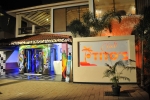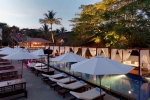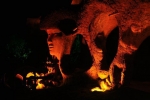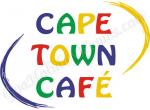Although the beautiful islands of Chorao and Divar are just a short distance away from the capital city of Panaji, they are rarely on the regular itenarary of the tourists.
However, both these islands are truly worth a visit, if only to get a taste of the tranquil and picturesque setting of rural Goa.
Chorao Island
To reach Chorao Island, you need to take the ferry ride across from the village of Ribandar, about 5 kms from Panaji, on the road to Old Goa.
Most of the western half of this island, is today a reserved area as the Dr Salim Ali Bird Sanctuary. It is full of dense mangrove swamps and the best way to navigate is by a canoe.
The Sanctuary is home to a variety of birds, animals and quite a few muggers - the Goan crocodiles. Another unusual inhabitant is the mudskipper - a mid-sized bulbous headed fish which actually skips through the mud at low tide.
The Chorao village on the island is a small collection of mud and thatch houses and some exquisite Portuguese villas. There is also a small village Church.
The road through this picturesque village finally leads to the crossing on the other side of the island which takes you to the famous Saptakoteshwar Temple at Narwe on the mainland in Bicholim taluka.
If you do visit the temple on the mainland, then on the return trip you can take the ferry ride which takes you to Divar island.
Divar Island
The island of Divar can be reached by a ferry ride on both sides: the ferry on the north side of the island is at Old Goa about 7 kms from Panaji and the ferry on the south side is from Narwe.
The ferries leave quite frequently throughout the day, unless there is inclement weather in the monsoons, so there is hardly any chance of being stranded on the island.
From both ferry crossings, the road passes through picture postcard Goan countryside, full of rice fields and wooded hills, before reaching the village of Piedade.
Piedade, a small, typical Goan village is spread at the bottom of a small forested hillock on which there is the Church of Our Lady of Compassion. Like the island of Chorao, well maintained, elegant Portuguese villas dot the countryside.
From the top of the hill, superb panoramic views of the surrounding countryside, including Old Goa and the meandering Mandovi river can be seen.
The famous Bonderam festival is celebrated in Divar, during the monsoon with great fanfare and attended by thousands of tourists and locals.
The charm of these islands, where life seems to have been unchanged for hundreds of years, can only be seen and experienced by walking or cycling through the countryside.





















